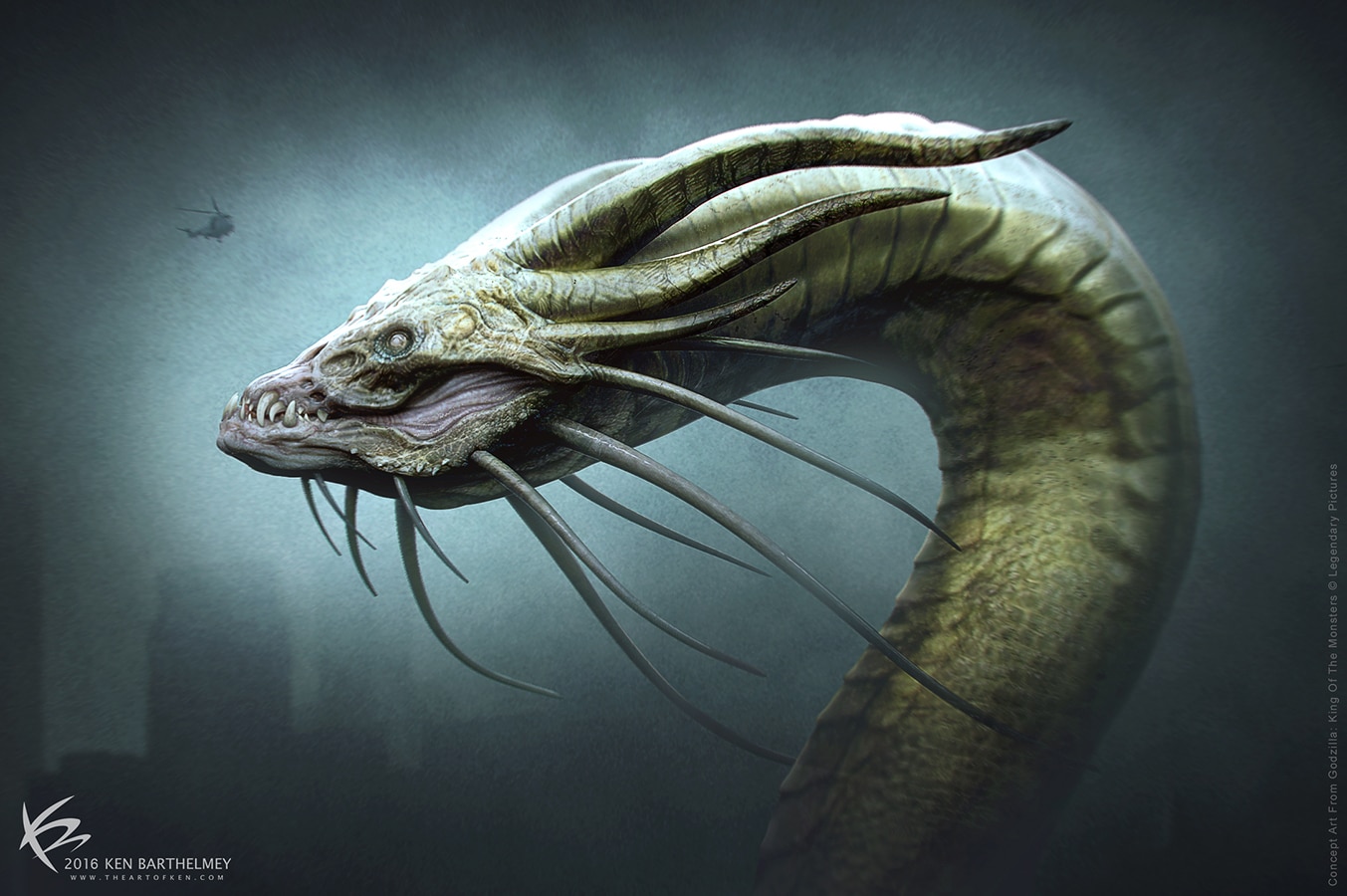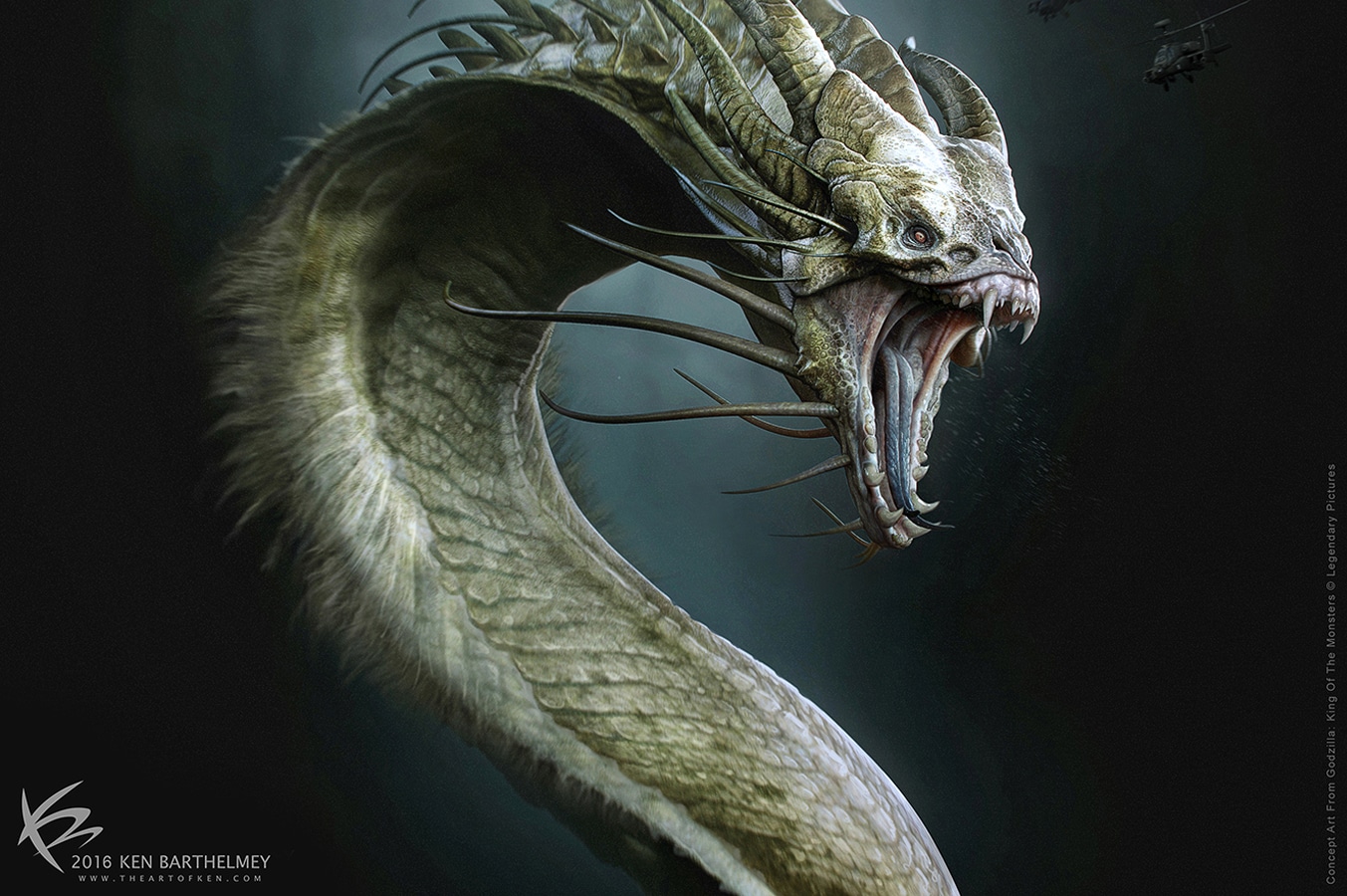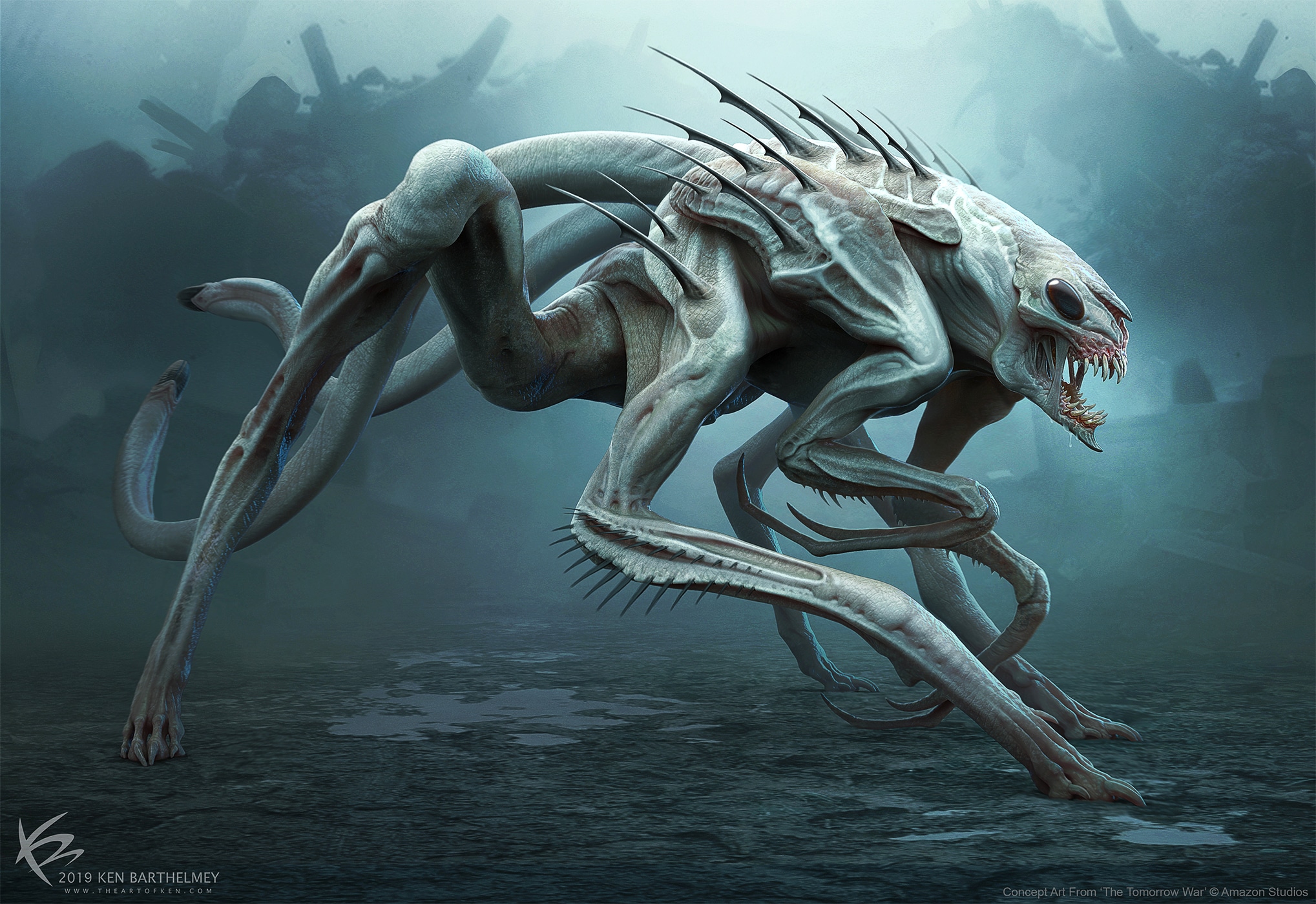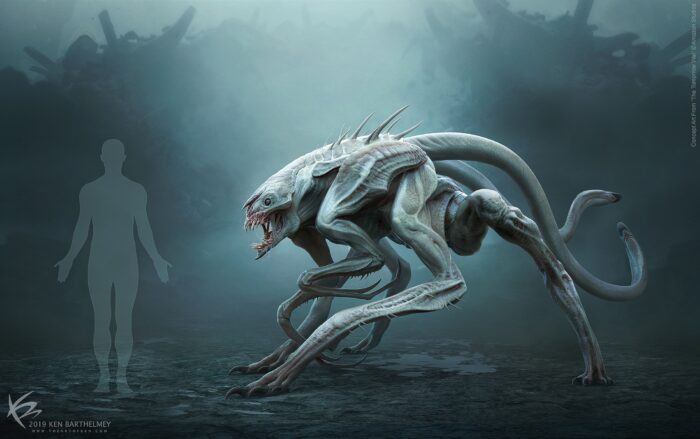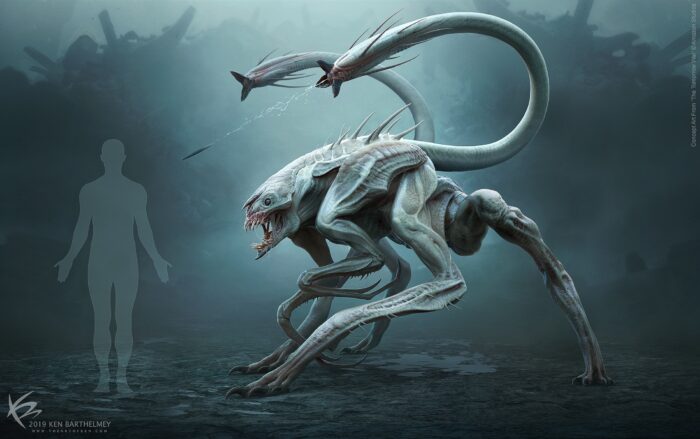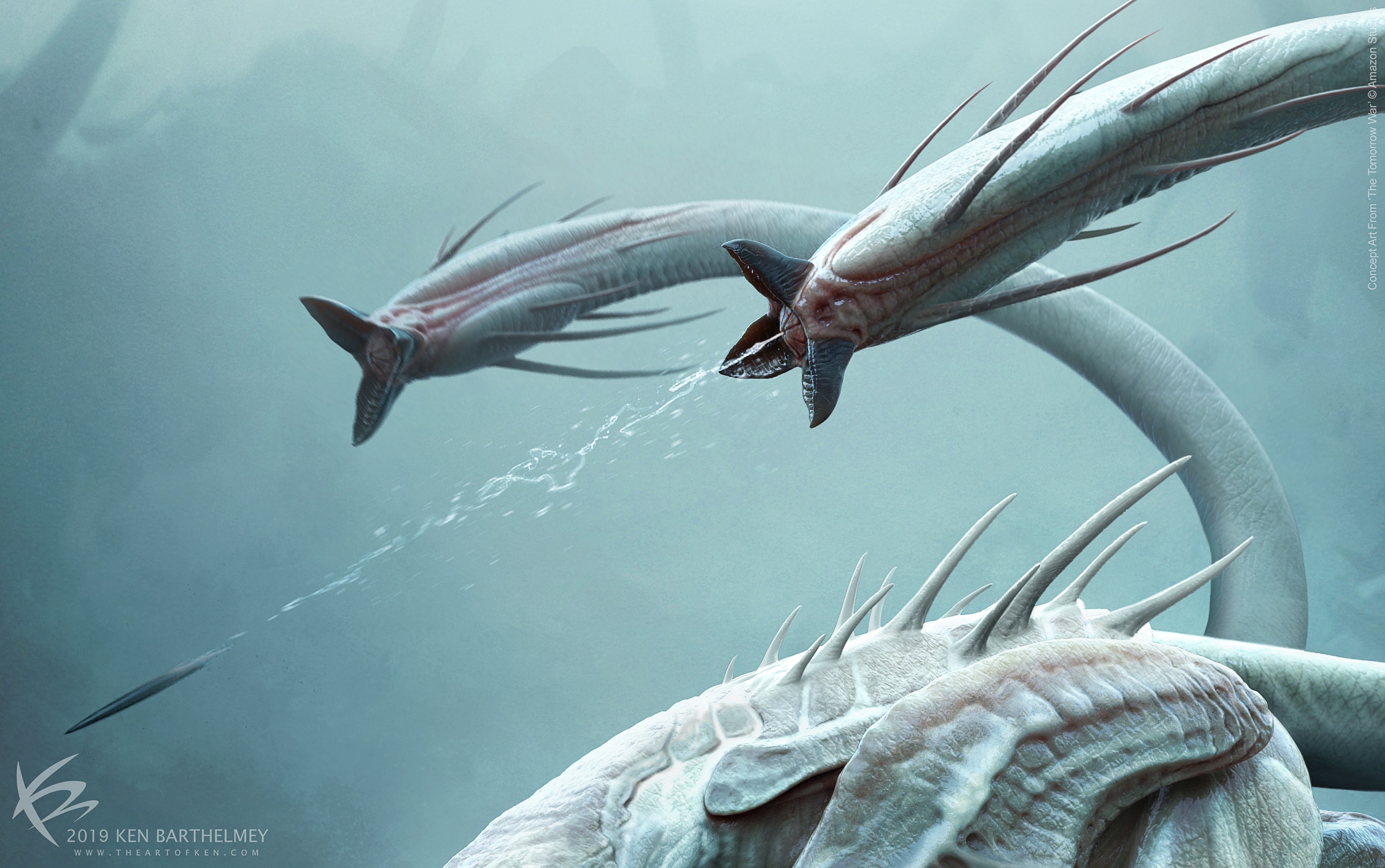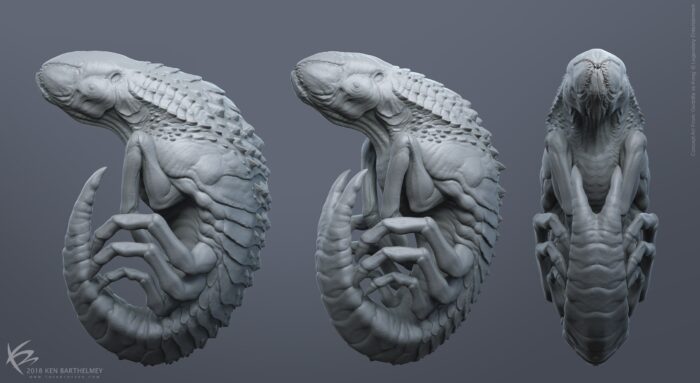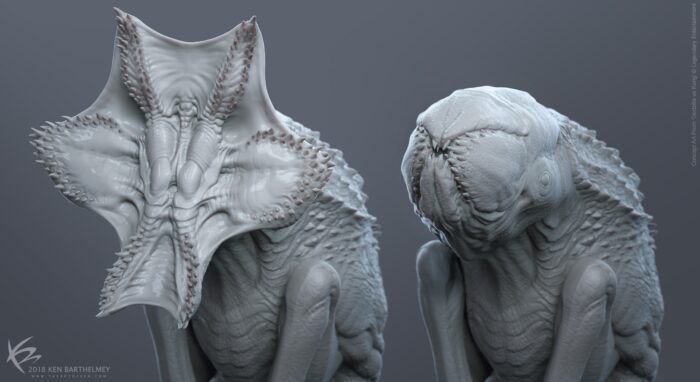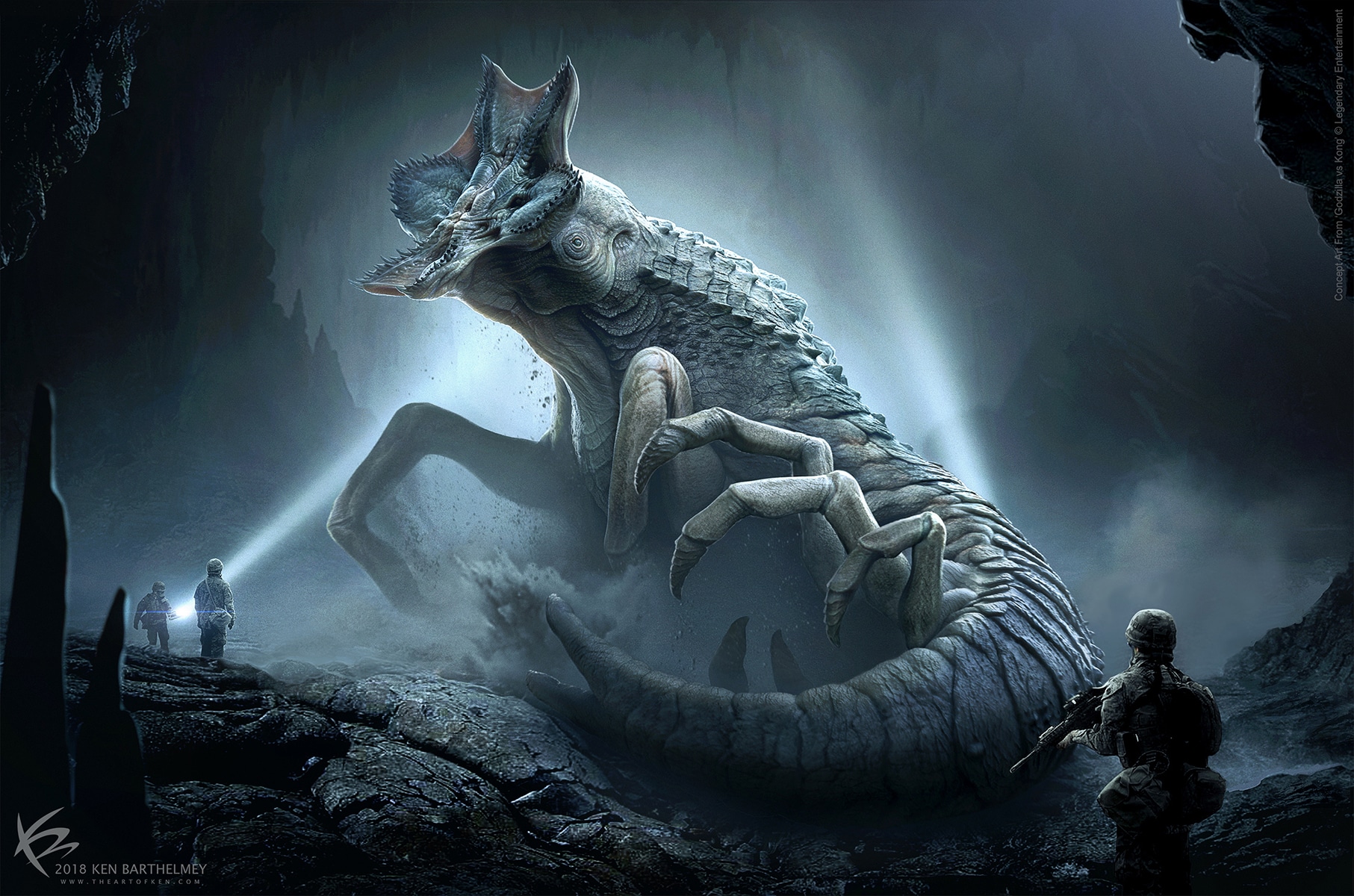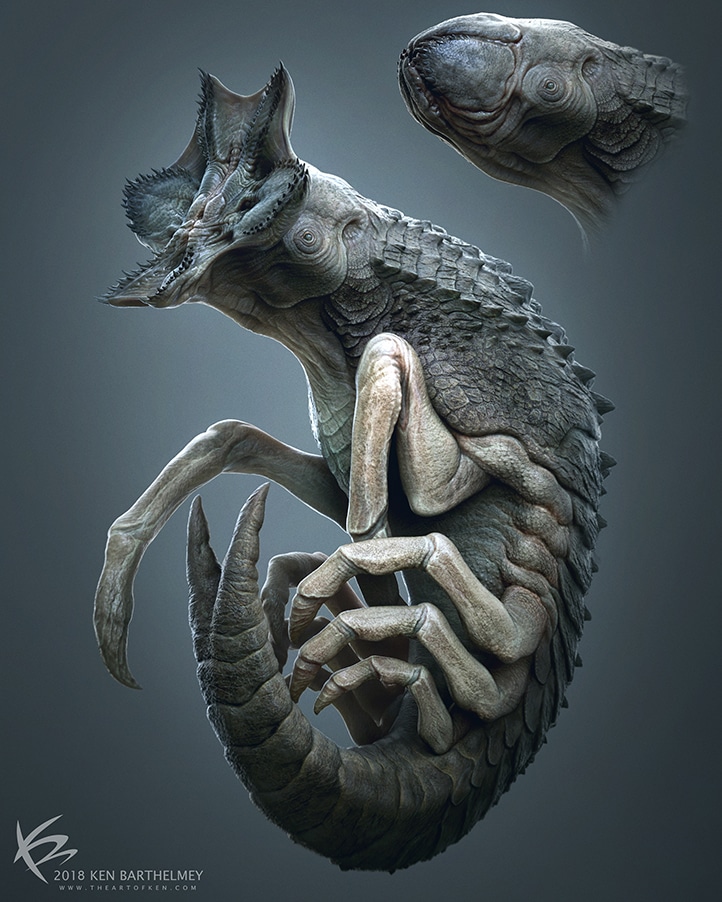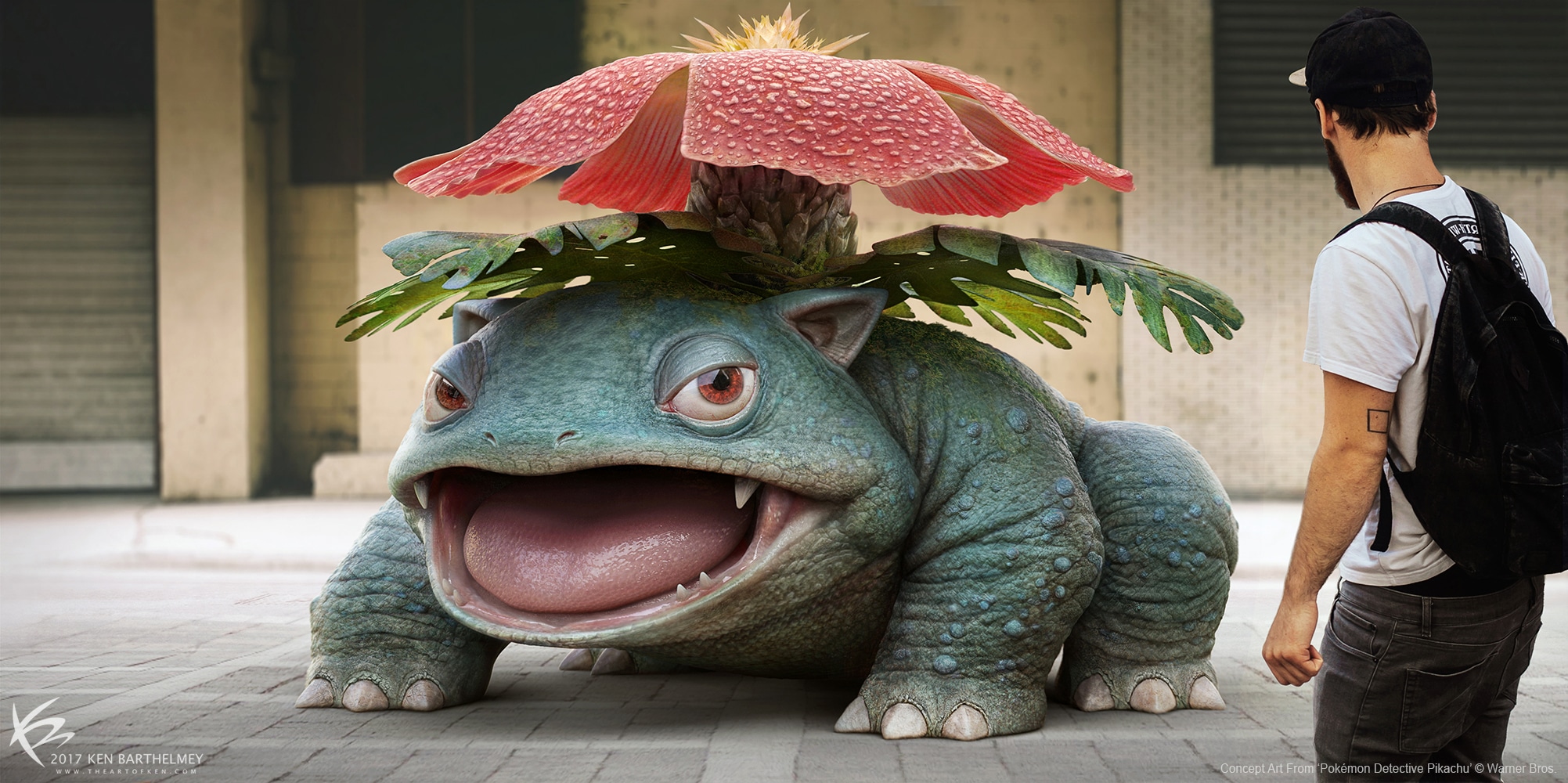As a dedicated Creature and Character Designer, Ken Barthelmey’s first big title credit came in 2014 as a creature designer for Maze Runner. Following this role, he has worked as a concept artist and creature designer for big-ticket films such as Aquaman 2, Godzilla vs. Kong, The Tomorrow War, and soon-to-be-released Thor: Love and Thunder. Along with ZBrush, he uses KeyShot to render and add a photorealistic aspect to his many creations, essentially bringing them to life.
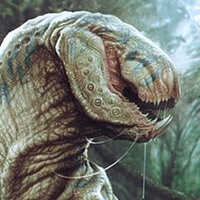
Ken Barthelmey
Modeling software used: ZBrush
Website | Artstation | Instagram | Twitter | Facebook | IMDb
What sparked your interest in Creature and Character Design?
Since childhood, I loved watching movies that featured aliens and creatures. They fired my imagination and I enjoyed drawing them. The two biggest influences were Star Wars and Jurassic Park. I think I was six or seven years old when I saw Jurassic Park for the first time. My passion for movies developed after I saw that film. A while later, I watched the behind-the-scenes documentary and I was blown away by the animatronic and puppet work. I was fascinated with special effects, visual effects, and the creation of movie monsters. That’s when I discovered the work of Stan Winston and his team. From Aliens to Jurassic Park, Stan worked on almost all my favorite movies. I soon realized that the imaginative imagery in films were created by artists and that it’s an actual job. It was a big revelation for me and I knew I wanted to do that as well.
What was the turning point in your career?
The first turning point in my career was when director Wes Ball hired me to design the Grievers for The Maze Runner. It was my first big design job in the movie industry. I still can’t believe how lucky I was because I was basically still a kid and had almost no experience. Other projects followed after that film. Designing the White Spikes for The Tomorrow War was another highlight of my career. I worked a few weeks with director Chris McKay and production designer Peter Wenham on the film. To my surprise, I was told at the very end that other designers (some I know and admire) already had previously worked on various alien designs, and ultimately it was my design that got picked for the film. The great thing about The Tomorrow War was that it’s an original film that is not a sequel or based on an already existent franchise. This opened the door for more creative freedom. Director Chis McKay was very collaborative and I loved how he chose to reveal the White Spikes in the film. The movie has one of the best monster reveal scenes I’ve seen in a while. This, the animations, and the sound design, all made the White Spikes truly memorable. I’m very happy how well the design is received.
What is unique about your approach to a design?
I like to work in both 2D and 3D. Every director wants to see different options in the beginning. Working with pencil and paper is a fast way to present early ideas. Coming up with ideas is the hardest part of the job but, once a direction is set, it’s pretty much refining the design until it gets approved. Therefore, when I work on a design, I always start with 2D drawings then, once a sketch is approved, I have a clear goal where I can focus on creating the 3D model and develop the design further in three dimensions.
Where in the process do you use KeyShot?
I use KeyShot at the end of the process for the final rendering. The program enables me to present the design in a very photorealistic way so that the client gets a good idea of what the character might look like in the finished film. KeyShot is a user-friendly and fast renderer which makes it a great tool for Concept Artists. In order to save time I normally don’t add color textures to my ZBrush models. I render the model with different materials in KeyShot and then composite those render passes in Photoshop. In the final stage, I overpaint the rendering for a more refined finish. This technique gives me more control over the textures and colors.
I’m currently working on a project where the director likes to see fully finished 3d models. In this case, I add more details to my models and I color them using Polypaint in ZBrush. It’s a bit more time-consuming but once you have a finished and fully textured model, you can render it from every angle instead of just one.
You mentioned the ZBrush to KeyShot Bridge helped save time on a deadline for The Tomorrow War. How else does the Bridge aid in your workflow?
Because of a planned meeting at the studio, I only had a few days to sculpt and render the White Spike. It was a tough deadline considering the complexity of the design, and exporting a model for rendering can be a time-consuming process. But thanks to ZBrush to KeyShot Bridge I managed to finish everything on time. I also use the Bridge while I’m still working on a model. Form is the most important element when you work on a design and model. Seeing the model in different light and shadow conditions often reveals weak points in the form.
How do you think creature/character visualization will change over the coming years?
I don’t see a big change other than the tools that will improve to reduce the amount of time it takes to create and render a model. I believe real-time rendering will be more common in the next few years. The advancement in faster and more realistic rendering will allow us to produce more work. But it will be up to the artist itself who uses these tools.
What advice would you give to someone interested in doing what you do?
Start learning the fundamentals of drawing and study anatomy. Anatomical knowledge is very important when you want to design believable characters and creatures. A good training is the regular sketching of animals. It is important to know all muscle and bone structures. Once you understand how anatomy works you’ll be able to come up with new body shapes that don’t exist in the real world but could exist. Then proceed learning 3D sculpting programs and how to render your designs in a compelling way. If you want clients to hire you as a designer, I suggest creating a portfolio with your own original designs. Follow your passion and ask yourself what kind of jobs or projects you actually want to work on. I love designing characters and creatures, so I made sure to create a portfolio that matched to my skills. That’s important because clients hire you based on what they see in your portfolio.

See more at theartofken.com






